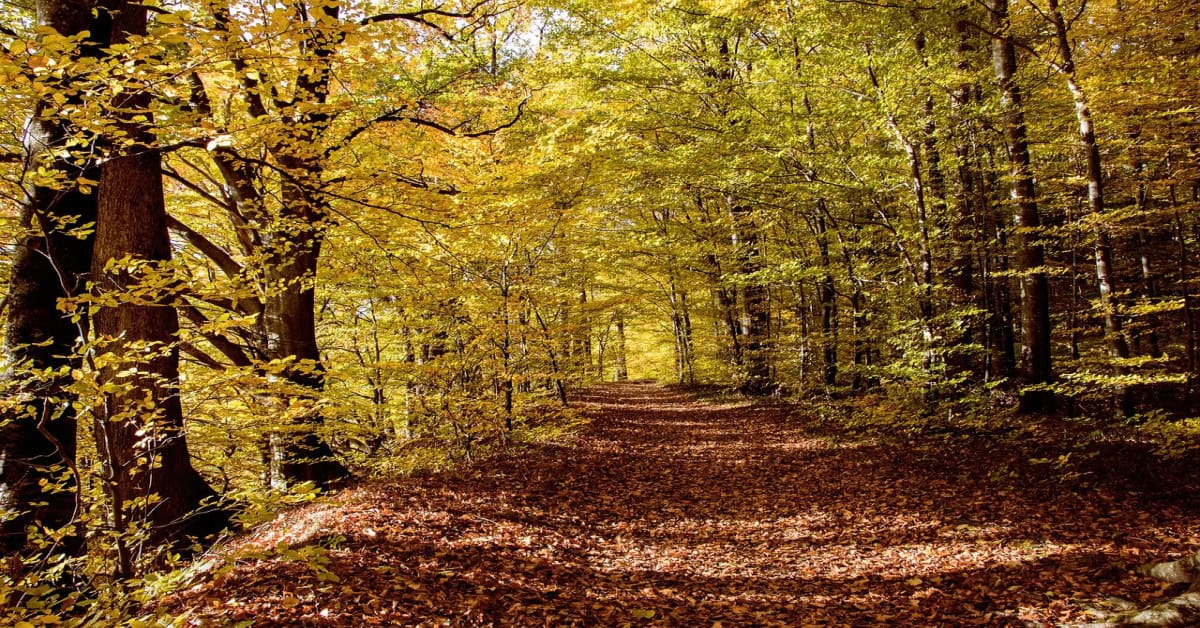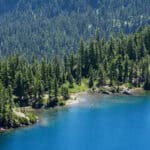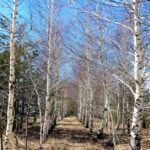Tropical deciduous forests, also known as monsoon forests, are a type of forest found in regions with distinct wet and dry seasons. These forests shed their leaves during the dry season to conserve water. This unique adaptation helps the forest thrive despite seasonal changes.
Understanding the tropical deciduous forest characteristics and distribution is crucial. These forests play a vital role in maintaining ecological balance.
They provide habitat for diverse plant and animal species. They also contribute to carbon sequestration, which helps combat climate change.
Knowing the characteristics and distribution of tropical deciduous forests helps in conservation efforts. It enables better management of these vital ecosystems. Protecting them ensures that their benefits are sustained for future generations.
Tropical Deciduous Forest
Tropical deciduous forests, or monsoon forests, are found in regions with distinct wet and dry seasons. These forests shed their leaves during the dry season to conserve water. They are home to diverse plant and animal species.
Understanding tropical deciduous forests is crucial for conservation. These forests play a vital role in maintaining ecological balance and supporting biodiversity. Protecting them helps sustain their benefits for future generations.
Characteristics of Tropical Deciduous Forests
Tropical deciduous forests, are unique ecosystems. They are found in areas with distinct wet and dry seasons. The diverse plant and animal life in these forests adapt to the changing environment.
Seasonal Leaf Shedding: Deciduous forests are known for trees shedding leaves in autumn and re-growing them in spring.
Diverse Plant Species: These forests host a variety of trees, shrubs, and plants, providing rich biodiversity.
Moderate Climate: These forests thrive in regions with warm summers and cool winters, experiencing four distinct seasons.
Rich Soil: The soil is fertile and rich in nutrients, supported by the decomposition of fallen leaves.
High Precipitation: These forests receive substantial rainfall, typically ranging from 30 to 60 inches annually.
Varied Wildlife: Deciduous forests support diverse animal species, including deer, bears, birds, and insects.
Distinct Layers: The forest structure includes distinct layers: canopy, understory, shrub layer, and forest floor.
Climate (Temperature Range)
Tropical deciduous forests experience warm temperatures year-round. The average temperature usually ranges between 20°C to 30°C.
Rainfall Patterns
These forests receive moderate to high rainfall. Annual rainfall typically ranges from 1,000 to 2,000 millimeters, mostly during the wet season.
Seasonal Changes
The climate has clear wet and dry seasons. During the dry season, trees shed their leaves to reduce water loss. This adaptation helps them survive periods of water scarcity.
Flora in Deciduous Forests (Dominant Plant Species)
Tropical deciduous forests are home to many plant species. Common examples include teak, sal, bamboo, rosewood, mahua, and sandalwood. These species thrive in the varying climate of these forests.
Adaptations of Plants to Seasonal Changes
Plants in tropical deciduous forests have unique adaptations. During the dry season, many trees shed their leaves to conserve water. Some plants have deep roots to access underground water. Others have thick bark to reduce water loss.
Types of Trees and Their Features
These forests are characterized by deciduous trees. Examples include teak, sal, and sandalwood. These trees lose their leaves in the dry season. Other types like bamboo and rosewood also adapt to seasonal changes, ensuring their survival.
Fauna in Deciduous Forests (Common Animal Species)
Tropical deciduous forests are rich in wildlife. Common species include tigers, elephants, leopards, deer, langurs, and wild boars and other invertebrates such as millipedes and spiders.
Tigers and leopards are apex predators, while elephants are known for their large size and herbivorous diet. Deer, such as the spotted deer, are grazers, and langurs are agile primates.
Adaptations of Animals to the Environment
Animals in these forests have unique adaptations. Tigers and leopards have camouflaged fur to blend with the environment. Elephants have large ears for cooling. Many animals, like deer and langurs, are active during cooler parts of the day to avoid heat.
Examples of Predator-Prey Relationships
Predator-prey relationships are vital in these forests. Tigers hunt deer and wild boars, maintaining the ecological balance. Leopards also prey on smaller animals like langurs. These interactions help control animal populations and ensure ecosystem health.
Also Read: Exploring the Diversity of Evergreen Forest Trees
Soil (Soil Composition and Fertility)
Soil in tropical deciduous forests is typically rich and fertile. It contains a mix of clay, sand, and silt. This composition supports diverse plant growth.
The soil is often deep, allowing for strong root systems. Fertility is high due to the constant recycling of organic matter.
Impact of Seasonal Leaf Fall on Soil Nutrients
Seasonal leaf fall significantly enriches the soil. When leaves decompose, they release essential nutrients back into the soil. This process enhances soil fertility and supports plant growth.
The nutrient cycle is crucial for maintaining the health and productivity of the forest ecosystem.
Ecosystem Dynamics (Interactions Between Biotic and Abiotic Components)
In tropical deciduous forests, biotic and abiotic components interact closely. Plants, animals, and microorganisms form the biotic components. Abiotic factors include sunlight, water, soil, and climate.
Plants use sunlight and nutrients from the soil to grow. Animals depend on plants and other animals for food. These interactions create a balanced ecosystem.
Role of Fire in the Ecosystem
Fire plays a crucial role in tropical deciduous forests. Natural fires clear dead plant material, which helps new plants grow. Some plants have adapted to rely on fire for seed germination.
Fire also controls the spread of pests and diseases. This natural process helps maintain the health and diversity of the forest.
Impact of Seasonal Changes on Ecosystem Balance
Seasonal changes significantly affect ecosystem balance. During the wet season, plant growth is abundant, providing ample food for herbivores. In the dry season, water scarcity causes trees to shed leaves, reducing food availability.
Animals adapt by migrating or adjusting their diets. These seasonal shifts ensure that resources are used efficiently, maintaining ecosystem stability.
Distribution of Tropical Deciduous Forests
Distribution of deciduous forests are widespread in areas with distinct wet and dry seasons.
Geographical Regions (Major Regions Where Tropical Deciduous Forests Are Found)
Tropical deciduous forests are widespread in regions with distinct wet and dry seasons.
They are commonly found in parts of India, Africa, Central America, and South America. These areas have climates that support the seasonal shedding of leaves.
Specific Examples of Countries and Regions
In India, tropical deciduous forests are found in states like Madhya Pradesh, Odisha, and Maharashtra. In Africa, these forests are prominent in countries such as Tanzania and Zambia.
In Central America, they are seen in parts of Mexico and Guatemala. In South America, Brazil’s Atlantic Forest and Bolivia’s Chiquitano Dry Forest are prime examples.
These regions all share similar climatic conditions that favour the growth of tropical deciduous forests.
Environmental Factors Influencing Distribution
Distribution of deciduous forests are influenced by:
Climate Zones
The distribution of tropical deciduous forests is largely influenced by climate zones. These forests thrive in areas with distinct wet and dry seasons. The wet season provides the necessary rainfall for growth, while the dry season triggers leaf shedding.
Consistent temperature ranges between 20°C to 30°C are ideal. These climatic conditions are found in tropical and subtropical regions around the world.
Altitude and Latitude Considerations
Altitude and latitude also play crucial roles in the distribution of tropical deciduous forests. These forests are typically found at low to moderate altitudes, where temperatures remain warm.
High altitudes can be too cold for these forests to thrive. Latitude determines the amount of sunlight and seasonality, which affects the forest’s growth cycles.
Tropical deciduous forests are mostly located between the Tropic of Cancer and the Tropic of Capricorn, where these conditions are met.
Importance of Tropical Deciduous Forests
Deciduous forests are important in several ways:
- Ecological Importance
- Economic Importance
- Environmental Services
Ecological Importance
Ecologically these forests are important for:
Biodiversity and Habitat Conservation
Tropical deciduous forests support a wide range of biodiversity. They provide habitats for various plant and animal species. This diversity ensures ecosystem resilience and stability.
Carbon Sequestration and Oxygen Production
These forests play a key role in carbon sequestration. Trees absorb carbon dioxide and release oxygen through photosynthesis. This process helps mitigate climate change and maintains atmospheric balance.
Economic Importance
Economically these forests are important for:
Resources Provided
Tropical deciduous forests provide valuable resources like timber and non-timber products. Timber from teak and sal is used for construction and furniture. Non-timber products include fruits, nuts, and medicinal plants.
Benefits to Local Communities
Local communities benefit from the resources these forests offer. They rely on forests for food, medicine, and livelihoods. Sustainable management ensures these resources remain available.
Environmental Services
Regarding environmental services these forests help prevent soil erosion and play a role in water regulation cycle.
Soil Erosion Prevention
The trees and vegetation in tropical deciduous forests help prevent soil erosion. Their roots hold the soil together, reducing runoff and maintaining soil health.
Water Cycle Regulation
These forests play a vital role in regulating the water cycle. They help in groundwater recharge and maintain local humidity levels. This regulation ensures a stable water supply for both the environment and human use.
Threats to Tropical Deciduous Forests
Deforestation and Land Use Change
Deforestation and land use change are major threats to tropical deciduous forests. Causes include agriculture, logging, and urban expansion.
These activities lead to habitat loss, reduced biodiversity, and soil degradation. Forest fragmentation disrupts ecosystems and makes it difficult for species to survive.
Examples of Affected Areas
In India, states like Madhya Pradesh and Odisha face severe deforestation. In Africa, Zambia and Tanzania see extensive land use changes.
Central America, particularly in regions like Guatemala, also experiences significant forest loss. These areas are losing valuable forest cover at alarming rates.
Climate Change
Climate change affects tropical deciduous forests by altering temperature and rainfall patterns. Increased temperatures and changing precipitation disrupt growth cycles and can lead to forest dieback.
Forests may shift to different regions or shrink, losing their ecological functions.
Potential Future Scenarios
Future scenarios include more frequent droughts and extreme weather events. These changes could reduce forest resilience and biodiversity.
Without intervention, many species may face extinction, and ecosystem services could be lost, affecting both nature and human communities.
Human Activities (Logging, Agriculture, and Urbanization)
Human activities such as logging, agriculture, and urbanization pose significant threats. Logging removes valuable trees, while agriculture and urban expansion lead to land clearing. These activities result in habitat destruction and increased carbon emissions.
Mitigation Strategies
Mitigation strategies include sustainable forestry practices and reforestation. Protecting existing forests through legal frameworks is essential.
Agroforestry, which integrates trees with crops, can provide economic benefits while conserving forests. Educating communities about sustainable practices and involving them in conservation efforts are also key to reducing human impact.
Conservation Efforts for Deciduous Forests
Conserving deciduous forest need immediate efforts these include:
- Protected Areas and Legislation
- Community Involvement
- Community-Led Conservation Initiatives
- Sustainable Practices
- Eco-Tourism and Its Benefits
Protected Areas (National Parks and Reserves)
Protected areas are crucial for conserving tropical deciduous forests. Examples include Kanha National Park in India and Niassa Reserve in Mozambique. These parks protect biodiversity and provide a safe habitat for many species.
Legal Frameworks Protecting These Forests
Legal frameworks play a vital role in forest conservation. The Forest Conservation Act in India and the National Environmental Policy Act in the U.S. are examples. These laws regulate land use and prevent deforestation, ensuring the protection of vital forest areas.
Community Involvement (Role of Indigenous and Local Communities)
Indigenous and local communities are essential for forest conservation. They possess traditional knowledge and have a direct stake in forest health. Their involvement ensures sustainable management and protection of forest resources.
Successful Community-Led Conservation Initiatives
Community-led initiatives have proven effective in conserving forests. The Chipko Movement in India and the Maya Biosphere Reserve in Guatemala are examples. These initiatives involve local people in protecting and managing forests, leading to significant conservation successes.
Sustainable Practices (Sustainable Forestry and Agriculture)
Sustainable practices are key to forest conservation. Sustainable forestry involves selective logging and replanting trees. Agroforestry integrates trees with crops, enhancing biodiversity and providing economic benefits. These practices ensure that forest resources are used responsibly.
Eco-Tourism and Its Benefits
Eco-tourism promotes conservation by generating income while preserving natural habitats. It provides economic incentives for local communities to protect forests.
Successful eco-tourism examples include Costa Rica’s Monteverde Cloud Forest and India’s Periyar Wildlife Sanctuary. These initiatives raise awareness and fund conservation efforts, benefiting both the environment and local people.
Conclusion
Understanding tropical deciduous forest characteristics and distribution is vital for appreciating their ecological and economic importance. These forests support diverse species, provide essential resources, and maintain environmental balance.
They face threats from deforestation, climate change, and human activities, which require urgent attention.
Continued research and conservation efforts are crucial to protect these forests. Effective strategies include establishing protected areas, involving local communities, and promoting sustainable practices. These actions help preserve the forests for future generations.
You can contribute to conservation initiatives by supporting eco-friendly products, advocating for forest protection, and participating in community conservation projects. Together, we can ensure the survival and health of tropical deciduous forests.








